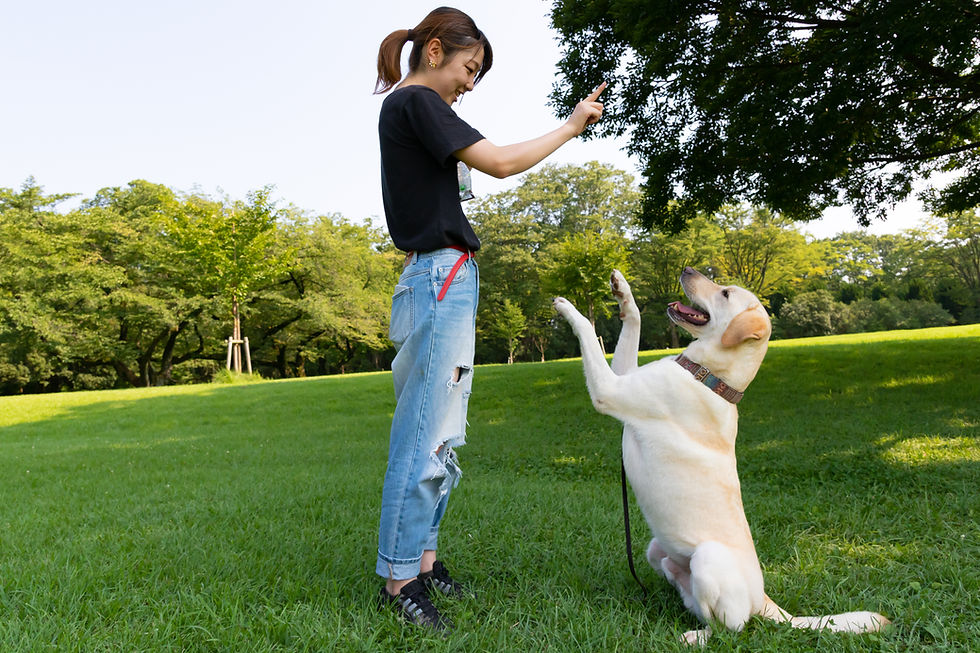Your Stubborn Dog
- Awesome Dog Academy

- Nov 1, 2021
- 3 min read

In our classes, we often hear people describing their dogs as stubborn. It is entirely unfair to label a dog as stubborn, because often, they are confused due to miscommunication. If dogs don’t respond to a cue it could be because it is new or unknown, they may associate it with something bad or scary, or maybe the environment is too distracting for them.
You may hear people say that dogs should do what we tell them to do because “I said so” just like parents expect kids to obey, or even “My dog should listen because they love me”. This approach is not the path to take with our dogs, who are motivated by results. If a dog gets a positive result of a behavior, they are more likely to repeat this behavior. We are working on creating a partnership between owner and dog, not a Supervisor to employee style relationship.
Dogs shouldn’t have to do what we say just because we tell them to, they should do things because they want to. Make sure that whatever you are using as reinforcement is something the dog enjoys, not just something you think they should enjoy. Some dogs will prefer toys to treats, others crave attention and petting as their rewards. Having something they enjoy will help dogs offer behaviors you ask for happily, instead of begrudgingly. As always, make sure you are providing the rewards quickly and clearly, not slowly.
Ensure the dog does not view the behavior as bad or scary. Dogs with hip or joint pain are going to be less likely to sit, as it can aggravate their pain. We can make things scary too, without even thinking about it. Dogs may be scared to jump into a car because they go to the vet or the groomer every time. It is our job as owners to understand that something which may appear small to us humans may be awful and terrible to our dogs. Make jumping into the car fun by riding around the neighborhood instead of going to the vet clinic every time.
Sometimes our dogs just don’t understand what is happening or what we are asking for. Humans often use body language without realizing that we are doing it. If we ask our dog to do something and don’t do some simple little hand gesture that we usually do, that could be enough of a change to confuse our pups. Remember also that the location changing can mean that dogs are learning an all new behavior, even if they are doing the same thing in a different place.
New environments and people will distract our dogs from us. Their attention will be naturally drawn to the exciting things happening around them, not the human they always see. When this happens, the thinking part of the dog’s brain (the cortex) shuts down and the emotional part of the brain (the amygdala) takes over. We hear it all the time as humans: “I was so frustrated that I couldn’t think straight”. It’s the same with dogs, they may be overly stressed due to the new environment and we can’t blame them for not doing what we say. In situations like this, it’s best to allow the dog time to de-stress then begin slowly with training.
Your dog isn’t stubborn, they are scared, distracted, confused, bored or even tired. Just like with humans, things will improve if you consider what they are going through and work with them. Together, as a team, it is our job to help owners see this and help them build their relationships with their dogs.



Comments